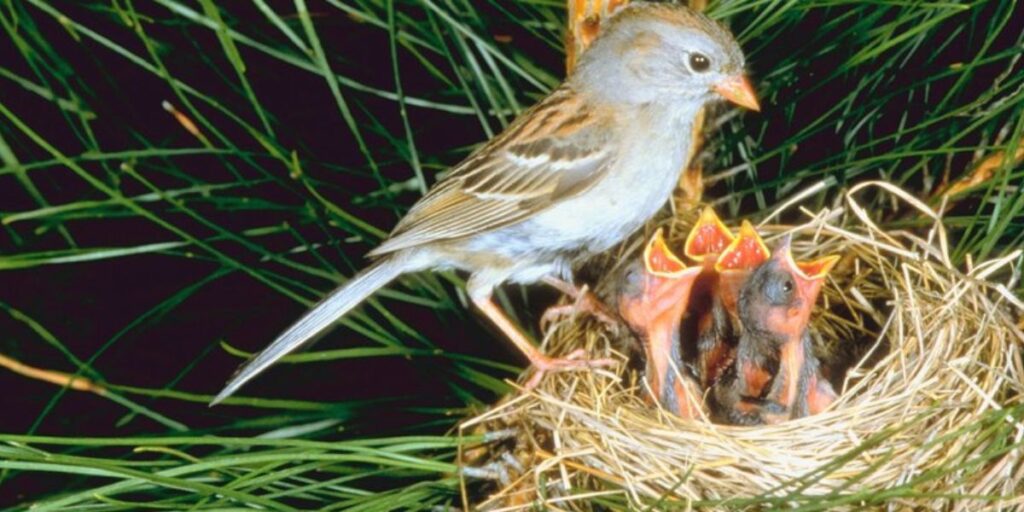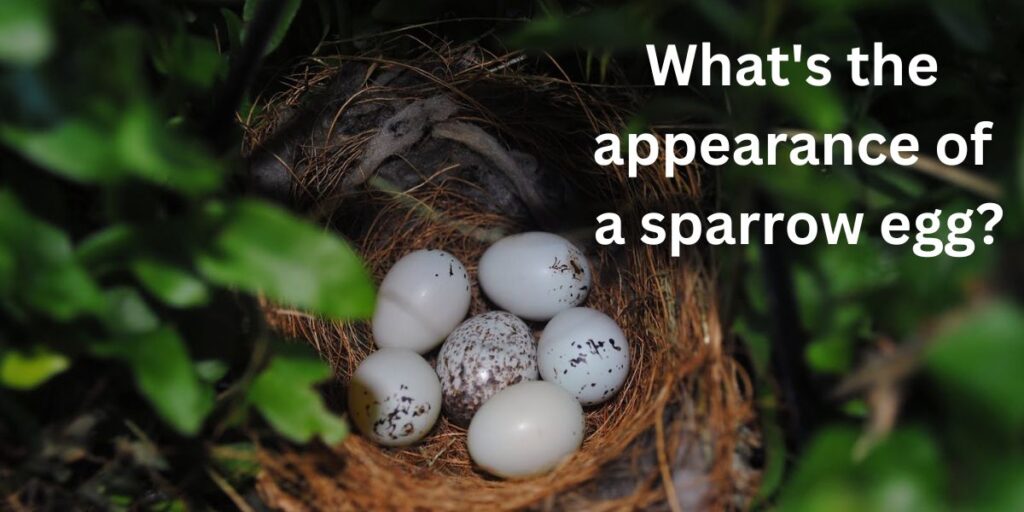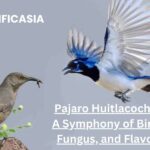Little passerine birds, or sparrows, are distinguishable by their unassuming and compact appearance. The common feathered companions that fly around our gardens and parks, sparrows, are sometimes written off as “little brown jobs.” However, a wonderful array of colours, patterns, and adaptations may be found behind their relatively simple surface, creating a far richer image than their throwaway nickname suggests. So let’s explore the world of sparrows and uncover the extraordinary qualities and hidden beauty that elevate these common birds above the ordinary.
Diet and Habitat
Sparrows are found almost anywhere, from the cold dampness of marshes and meadows to the dry scorching of deserts. They can also be found in cities and woodlands. As their name suggests, house sparrows often prey on human dwellings, making their nests in the many cracks and crevices found within. Although they mostly consume seeds, they will also consume small fruits and insects, particularly in the warmer months when these foods are more abundant.
Look
Depending on the particular species, their appearance can vary slightly; however, the common house sparrow (Passer domesticus) is described below as a guide:
The traits that set sparrows apart the most are as follows:
Male house sparrows are distinguished by their vivid and colourful feathers, which include a greyish crown, white cheeks and underparts, and a chestnut-brown back. A little black patch on their chin and a black throat “bib” are also present. Their plumage brightens significantly more in the breeding season. On the other hand, female house sparrows tend to be less colourful and duller than their male counterparts.
Beak: Sparrows are equipped to crack seeds with their short, conical beaks. Usually, the beak has a dark hue.
Eyes: Considering their head size, their eyes are small and black.
Sparrows can fly quickly and agilely due to their round wings: Usually, the wings have light lines and are brown.
Legs and Feet: They have strong, somewhat small legs that can be used for hopping and perching. The feet are designed to hold onto ledges and trees.
Tail: A sparrow has a short, square-off tail covered with brown feathers.
Size: Sparrows are easily distinguished from larger birds due to their modest size.
Sparrows are members of the Passeridae family of birds, which is quite diverse and has many species across the world, each with distinctive traits of its own. Although the house sparrow is the main subject of the description above, other species may differ in size, colour, and pattern. All the same, one of the most identifiable and commonly seen birds in cities and suburbs is the common house sparrow.
What is the appearance of a sparrow bird?

Never let the moniker “little brown job” deceive you! The commonplace feathered companion that flies through our gardens and parks, the sparrow, is a wealth of amazing adaptations and undiscovered beauty. Although several species may share a common brown colour, the colour is by no means monotonous. Picture a colour scheme full of earthy tones, such as cold greys, rich chestnuts, warm buffs, and speckled ochres, that merge and clash in beautiful ways. For example, the Song Sparrow’s breast displays a symphony of streaks, with each feather serving as a canvas for the natural artistry. The Field Sparrow has a unique rusty bib and crown that make it look like a tiny fall forest. The artistry of the birds doesn’t end there, though. Some sparrows have more striking colour splashes, such as the house sparrow. Males stand out against the metropolitan landscape with their stylish ensemble of grey hats, white cheeks, and black bibs. Even “plain” females have an exquisite appearance with their brown and buff colour scheme, with a hint of rufous warming their undersides. Thus, keep in mind that sparrows are more complex than they first appear to be the next time you see one!
How does a sparrow nest appear?
A cosy work of art made from the leftovers of nature is a sparrow’s nest. The wonderfully chaotic nests of sparrows, in contrast to the neat, cup-shaped nests of many songbirds, are a reflection of the random yet diligent nature of their builders. Imagine a roughly spherical construction comprised of feathers, twigs, dried grasses, leaves, and even artificial materials like paper or string. The structure would be constructed layer upon layer.

Imagine a woven basket filled to the brim with a tangle of coarse vegetation, which is frequently crammed into openings such as gaps in dense shrubs or structures. Its messy exterior conceals a surprisingly soft inside lined with finer materials such as fur, moss, or feathers, which act as an insulator and warmth source for the sparrow’s priceless eggs. Approximately the size of a grapefruit, these nests are remarkably resilient, able to endure wind, rain, and even the inquisitive investigations of a hungry predator. They stand as an example of the ingenuity and commitment of these tiny birds, who turn indigent materials into safe havens for their progeny.
Thus, the next time you come across a sparrow’s nest, stop and enjoy its peculiar attractiveness. Even if it’s not an exact architectural replica, it’s a lovely and useful representation of avian creativity and parental love.
What’s the appearance of a sparrow egg?
A treasure trove of little treasures can be found while peeking into a sparrow’s nest: its eggs. Sparrow eggs are masters of subtle beauty, a little cosmos of subdued tones and delicate patterning, in contrast to the vividly coloured eggs of many other species. Imagine a set of tiny marbles, about the size of a large grape, with colours varying from a light greenish-white to a faint bluish-white, and occasionally even with a hint of warm brown.

These little ovals have tiny dots and squiggles scattered all over them, usually in grey or brown hues, giving them a camouflaged appearance that mixes in well with the lining of the nest. The marks are usually clustered near the wider end of the egg, resembling constellations dispersed throughout a miniature sky. Despite appearing basic, every egg has a distinct design that serves as a hidden fingerprint of the life that is just waiting to blossom inside.
The smooth and slightly glossy, delicate shells of the eggs are a sign of impending life. You feel awestruck as you watch them gently tuck in the nest. These tiny, delicate, and lovely specks are about to change into vibrant, chirping sparrows, eager to take over the world with their graceful songs. Thus, if you get the chance to see a sparrow’s nest, stop and look at the eggs inside. They are a living example of the delicate miracle and serene beauty of life in its most basic form.
How Large Do Sparrows Get?
Sparrows are small birds in general, and the size of each species can vary significantly, but the average size of a sparrow can be roughly measured as follows:
Length: From the tips of their beaks to the ends of their tails, sparrows usually range in length from 4.3 to 7.9 inches (11 to 20 cm).
Their wingspan is roughly between 6.7 and 9.8 inches (17 and 25 centimetres). Because of their round shape and relative shortness, the wings enable quick flying.
Weight: Sparrows are light birds, weighing between 0.4 and 1.2 ounces (12 to 34 grammes) for the majority of species. Age, sex, and diet are a few variables that may affect their weight.
The world is home to many different kinds of sparrows, and although they all have some traits in common, these species might differ in size. While specific dimensions may vary slightly for other species within the Passeridae family of sparrows, the measurements given below are typically appropriate for many sparrows, including the common house sparrow. Having said that, sparrows stand out from larger bird species due to their small stature and compact nature.
What Shade Do Sparrows Have?
While they can be found in a variety of colours, sparrows are best known for their subtle, cryptic plumage, which helps them blend in with their surroundings. The species of sparrow as well as the age and sex of the bird can all affect its particular colour.
The following are typical patterns of colours for sparrows:
Brown and Grey: The plumage of many sparrows, such as the house sparrow, is coloured in shades of brown and grey. Usually brown with mottling on the back and wings, sparrows mix well” with grassy and shrubby habitats.
White: The throat, belly, and vent area of sparrows are frequently covered with white or light underparts. Species differences exist in the amount of white on the underparts.
Black Markings: The faces and necks of certain sparrows bear noticeable black markings. The male house sparrow, for instance, has a little black patch on its chin and a black throat “bib.”. It is during the breeding season that these black marks become more noticeable.
Chestnut or Rufous: Some species, like the American tree sparrow, have markings on their heads or crowns that are coloured in this colour scheme.
Orange or Yellow: Certain sparrows, such as the Savannah sparrow, have streaks or patches of orange or yellow on their breast, cap, or cheek.
Green or Olive: Some species, such as the green-tailed towhee, have patches of green or olive-colored feathers.
Blue: The male indigo bunting, which is not a true sparrow but is frequently mistaken for one during the breeding season, is distinguishable by its vivid blue plumage.
Grey or Blue-Gray: The head markings of certain species, such as the white-crowned sparrow, can be seen to be either grey or blue-gray.
Not every sparrow follows the earthy colour palette. The White-crowned Sparrow displays a majestic white band over its head, while the Black-throated Sparrow lives up to its name with a stunning dark bib. With its rusty plumage, the Fox Sparrow resembles a flaming ember, while the Clay-colored Sparrow befits its name with its warm, desert-hued feathers.
Sparrows are a varied group of species, and there are big differences in coloration amongst them. Furthermore, compared to their male counterparts, female sparrows of many species typically have more muted and cryptic plumage. Sparrows benefit from these subdued hues because they frequently live in grasslands, shrublands, and urban areas, where they must blend in with their surroundings to survive.
A Symphony of Songs: The Melodies of Nature
Sparrows have modest plumage, but their vocal prowess more than makes up for it. Their melodies are a lovely mix of trills, whistles, and chirps, with each species having its distinct tune. The Song Sparrow’s vast repertory, a tumbling stream of notes intertwined into elaborate patterns, is a veritable masterpiece. The quick-fire chirp of the Chipping Sparrow is easily identified; it sounds like happy banter through the foliage. These songs are used for more than simply music; they are a vital part of the social fabric of the sparrow world, with each note working as a means of communication, territory defence, and mate attraction.
Damage and Additional Issues
The primary issue with sparrows is that they are so common that they push out other, more vibrant birds. They eat bird baths, bird houses, and feeders. House sparrows are a particular problem for homeowners because of their intrusive and occasionally hazardous breeding practices. Nests made by house sparrows in kitchen exhaust vents, dryer vents, and furnace exhaust vents might catch fire. The exhaust pipes amplify the birds’ chirping in the early morning, which wakes up the residents. For accurate sparrow population identification and management, get in touch with Critter Control’s wildlife experts.
Sparrows: A Closer Look Than You Think
Therefore, the next time you witness a sparrow flying by, pause to recognise the amazing adaptations and delicate beauty that reside behind its “little brown job” appearance. These everyday birds are a tribute to the diversity and wonder of the animal kingdom, with their exquisite plumage patterns, unique beaks, and enthralling songs. Who knows, maybe in the process you’ll meet your new best friend, a feathery companion!
More Stories:
Edgenuity Earth and Space Science Answers Ultimate Guide for Students
Fernbank Science Center A Comprehensive Guide to Atlanta Historical Hub










